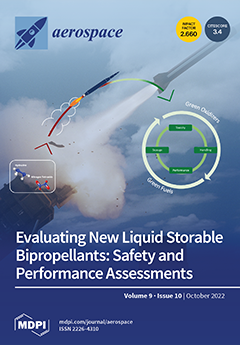In this study, a new family of rational mapping functions
gRM(
ω;
k,
m,
s) is introduced for seventh-order WENO schemes.
gRM is a more general family of mapping functions, which includes other mapping functions such
[...] Read more.
In this study, a new family of rational mapping functions
gRM(
ω;
k,
m,
s) is introduced for seventh-order WENO schemes.
gRM is a more general family of mapping functions, which includes other mapping functions such as
gM and
gIM as special cases. The mapped WENO scheme WENO-IM(2,0.1), which uses
gIM, performs excellently at fifth order but rather poorly at seventh order. The reason for this loss of accuracy was found to be the over-amplification of very small weights by the mapping process, which can be traced back to the large slope of
gIM at
ω = 0. For
m > 1,
gRM can be designed to have a unit slope at
ω = 0, which will preserve small weights with little to no amplification. It has been demonstrated through several one-dimensional linear advection test cases that the mapped WENO scheme WENO-RM(6,3,2 × 10
3), which uses the mapping function
gRM(
ω;6,3,2 × 10
3), outperforms both WENO-M and WENO-IM(2,0.1) at seventh order. The proposed scheme also performs better at a number of one-dimensional inviscid gas flow problems compared to other popular WENO schemes such as the WENO-Z scheme.
Full article





